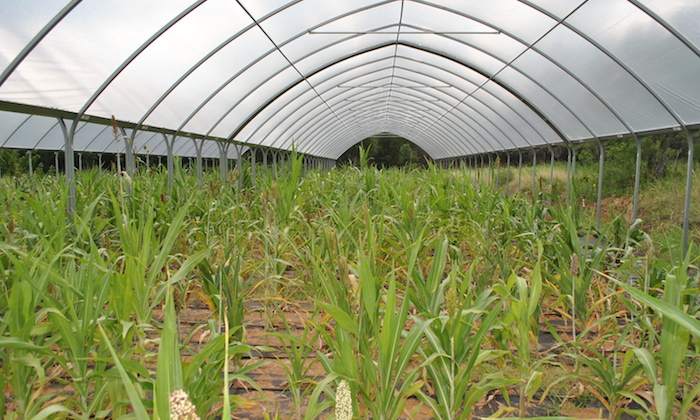With climate change and population growth putting stable food supplies at risk, finding crops that can thrive in increasingly harsh environments is critical. It's also a challenge, given the difficulty of identifying plants well suited to stressful conditions.

But now a team of researchers has developed a method to predict how varieties of one of the world's most important crops will respond to stress from their environment. By studying the genomes of almost 2,000 species of sorghum from around the world, the scientists, including Thomas Juenger from the Department of Integrative Biology at The University of Texas at Austin, pinpointed environmentally beneficial traits—called genomic signatures of adaptation—that reflect how each variety has adapted to stressors, such as drought and soil toxicity, present in their growing region.
The team then showed that these genomic signatures are not merely associated with a plant's adaptability—they can actually predict how crops will perform in a drought. By conducting drought tolerance experiments on hundreds of sorghum varieties, grown at the Brackenridge Field Laboratory at The University of Texas Austin and at the International Crops Research Institute for Semi-Arid Tropics (ICRISAT) in India, the team confirmed that the genomic technique correctly identified which varieties did well under low-water conditions.
Findings from the study were catalogued in a database that aims to help sorghum breeders with limited resources in developing countries have better predictions of what varieties of the crop will thrive in the environment and in a growing season's forecasted weather.
The research team included scientists at Kansas State University, University of Columbia, Cornell University, Clemson University and institutions outside the United States.
The study, "Genome-environment associations in sorghum landraces predict adaptive traits," is freely available through Science Advances, an open-access journal of the American Association for the Advancement of Science.
Adapted with permission from a post at Kansas State University.


















Comments